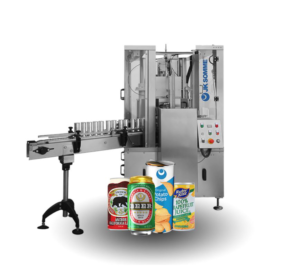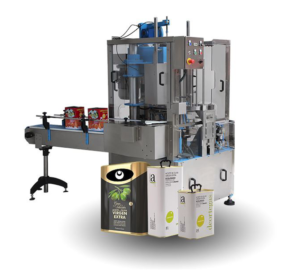We provide one of the most comprehensive, high-quality, cost-effective range of can seamer machines in the world. Total quality solutions are offered for seaming all kind of irregular and round cans, from semi-automatic to fully-automatic seaming machines. With speeds ranging from 10 to 600 cans per minute.
AUTOMATIC CAN SEAMER MACHINES
With speeds reaching 600 cans/minute and the possibility of seaming from the smallest to the biggest can (both round and irregular), our automatic can seamer machines are a winning choice for your business. Designed for small canneries, multi-national companies and large scale manufacturers
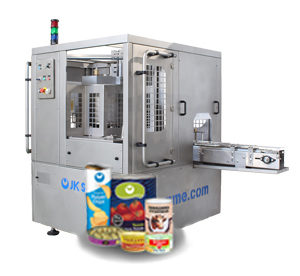
MASTER 340
Round can seamer
Up to 90 cans/minute.
For small, medium and big size cans.
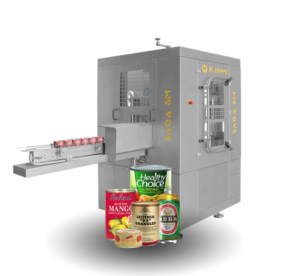
SAGA 4M/6M/8M
Round can seamers
Up to 300/450/600 cans/minute.
For small and medium size cans.
JK Somme irregular can seamers have become the can seaming machines of choice for fish, meat & vegetable canneries worldwide. Designed for seaming all kind of irregular cans (1/4 club, dingley, oval, hansa, etc.) with speeds up to 300 cans per minute.
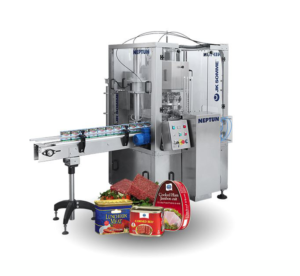
NEPTUN 80/120
Irregular can seamer
Up to 70 cans/minute.
For small and medium size cans.

MASTER 440
Irregular can seamer
Up to 100 cans/minute.
For small and medium size cans.
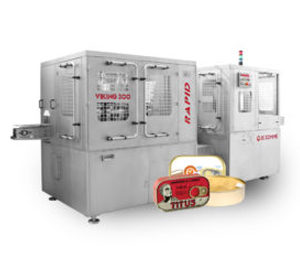
VIKING 300 RAPID
Irregular can seamer
Up to 300 cans/minute.
For small and medium size cans.
SEMI-AUTOMATIC CAN SEAMER MACHINES
Semi-automatic and manual can seamer machines are perfect for small industrial productions, home canning, market tests, labs, technical schools/universities, etc. The main advantage of this kind of seamers is their high versatility, making it possible to seam different can sizes (diameters & heights) during the same day.
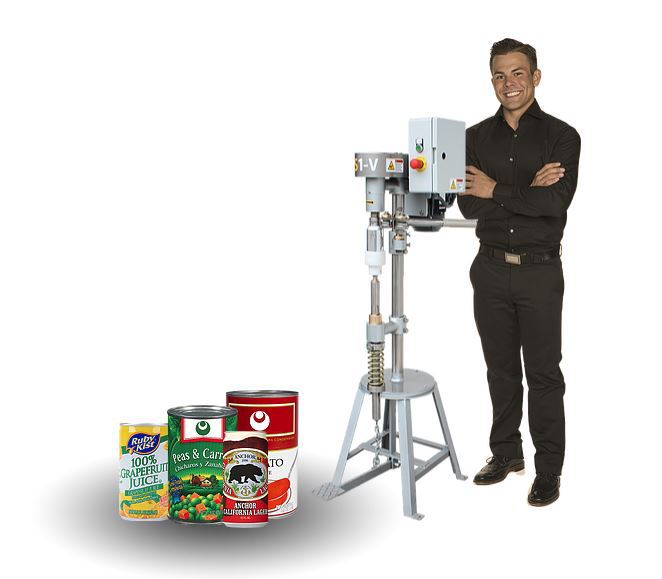
WHAT IS A CAN SEAMER?
A can seamer machine also referred as can closer or can sealer is a machine used to hermetically seal the lid to the can body. The lid, end or cover can be made of tinplate steel or aluminum while the body can be tinplate, aluminum, composite (cardboard like) or plastic.
The seam achieved is generally leak proof, but this depends on the product being canned. The seam is made by mechanically overlapping the two layers to form a hook. Different parameters of the hook are measured and monitored to check the integrity of the seam under different conditions. The shape of the double seam is determined by the shape of the seaming roll profile and the relative position.
Two seaming options:
-
Rotary can seaming operation: During the can seaming process, the seamer chuck and the two seaming rolls (1st and 2nd operation) stand still while the can rotates/spins.
-
Still standing can seaming operation: During the can seaming process, the seamer chuck holds the can while the four seaming rolls (two 1st and two 2nd operation) rotate around it.
In both cases the first operation roll folds the lid (end/cover) and then the second operation rolls tighten the resulting seam. The first operation seam is critical to avoid problems like wrinkles (tightness issues) and leaks. The shape of the seam is determined by the shape of the first operation roll, the second operation roll, their relative positions and distances, lifter height, lifter pressure. Any damage or problems to the seamer or seamer tools can cause severe problems to the double seam like seam bumps, wrinkles, sharp seams, and open seams.
JK SOMME CAN SEALERS | Heavy duty construction – made for lasting a life time
Since 1905, JK SOMME legendary can seamers have a reputation for being almost indestructible, real working mules. How many SOMME machines over 60 years old are still working in the canneries worldwide? You would be surprised. A family tradition now in its third and fourth generation remaining faithful to two basic principles based on quality and innovation.
100% mechanical – all elements geared up
Movement is transmitted by large, robust and accurate gears. With the only help of our hands machine can be easily moved by just turning the seaming head. Nowadays more and more can seamer manufacturers are applying electronic solutions such as servos for replacing mechanical connections. Believe this can be a solution for high tech ultra clean factories (beer and beverage) but not for the 95% rest of canneries (fish, meat, vegetables, fruits…).
In JK SOMME we believe a machine must be ready for working in the middle of the dessert or the jungle with lack of skilled technicians, no commercial parts, power shutdowns…Summing up: work under the worst scenarios.
Stainless steel finish – reduced corrosion
The intensive use of stainless steel allows the can seamer to work in extreme conditions, under the harshest, saltiest and steamiest environments. Machine will not suffer from corrosion and therefore its elements will last longer. This is especially important when working products with high grade of pH such as tomato sauce, brines, etc.
CE compliance – made in Europe
“CE” is the abbreviation of French “Conformité Européene” which means “European Conformity”. By tagging the CE marking to a can seamer, we declare that the machine meets all the legal requirements for CE marking and can be sold throughout the EEA (European Economic Area).
The two main benefits that CE marking brings to machine producers and consumers within the EEA:
-
Producers know that can seamers bearing the CE marking can be traded in the EEA without restrictions.
-
Consumers enjoy the same level of health, safety, and environmental protection throughout the entire EEA.
MECHANICAL VACUUM CAN SEAMERS
What is entailed in seaming a can under vacuum
The process whereby the air in the can is mechanically extracted by means of a pump, within a vacuum chamber, just before the can is hermetically seamed. The result is a partial vacuum inside.
-
If the can has been filled with a solid product and liquid, the vacuum is produced in the head space (upper chamber). The more space in the head, the higher the vacuum. The more space in the head, the greater the saving in liquids.
-
If the can has been filled only with a solid product, the vacuum is produced around the solid.
Why canned product life is longer with vacuum seaming
If as much air as possible is extracted from the can, there is a reduction in the proliferation of bacteria, moulds, enzymes, etc., since these and other microorganisms need air for development. When the can is seamed, oxygen levels continue to fall while levels of carbon dioxide rise.
An environment low in oxygen and high in carbon dioxide reduces the growth of organisms that impair the preserve, so that life is longer and the expiry date can be extended.
Who should use vacuum can seamers
Whoever wish to:
-
Prolong the shelf life, and enhance the quality, of his long duration canned food.
-
Save on liquids.
-
Produce more natural long duration canned foods.
What are the advantages of vacuum seaming
- Liquids are filled cold.
- Considerable saving in liquids (olive oil, sauce, vinegar, wine, etc.), which are often costly, owing to the greater head space.
- Within the can there is less oxygen, since there is less air.
- Reduction in the proliferation of bacteria & moulds = better presentation.
- The coloring of the product looks more natural & better
- Fewer product burns during sterilization.
- No more bulging cans.





